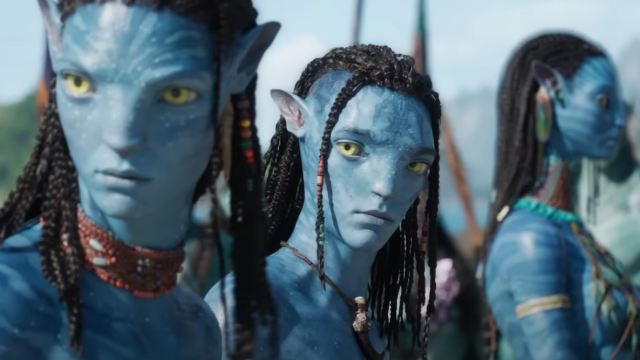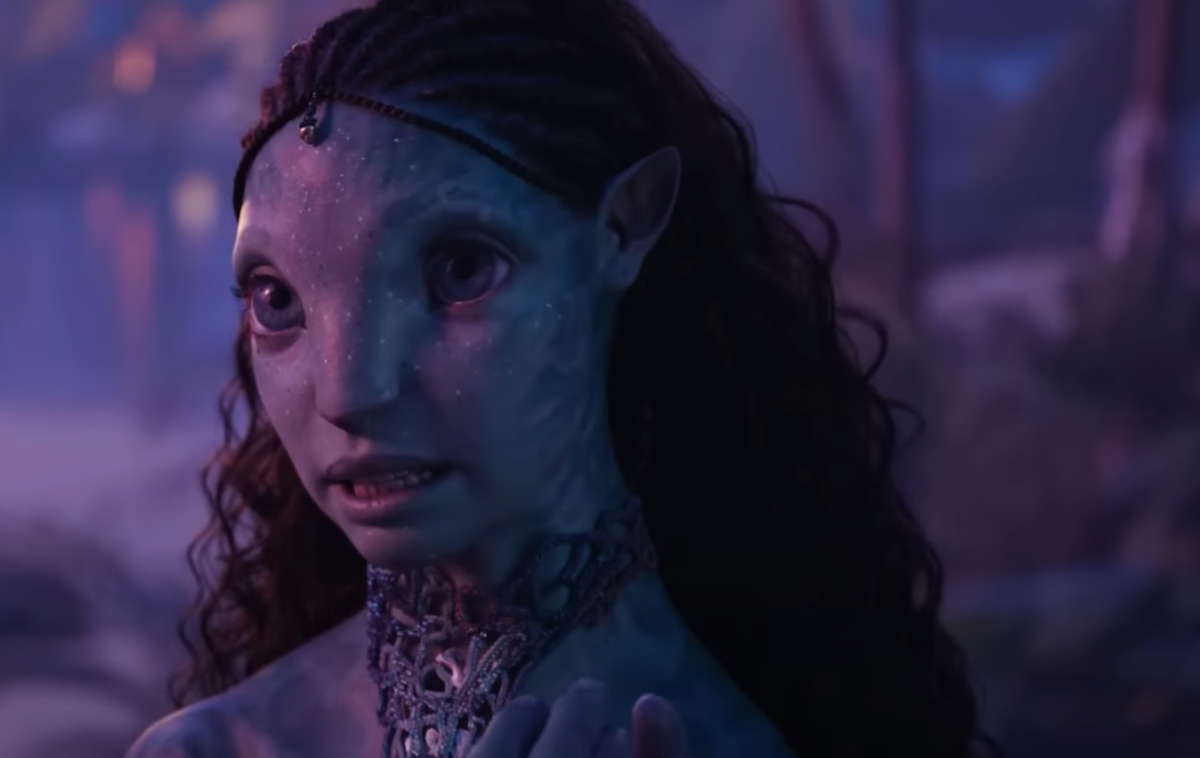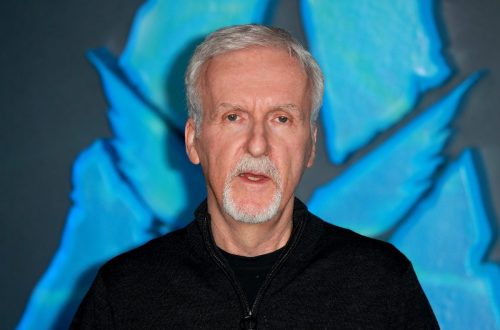Did the New “Avatar” Movie Look Like a Video Game to You? Here’s Why.

The long-awaited sequel to 2009’s Avatar quickly—and expectedly—became a huge success after its December release. The movie has already made over $1 billion and is receiving many positive reviews. But, one aspect of the film is throwing some viewers off: the way Avatar: The Way of Water looks. Sure, it features the latest and greatest technology when it comes to filming scenes underwater and bringing the Na’vi to life, but some have said that, at times, the movie looks too clear and hyper-realistic, making it appear more like a video game than a cinematic experience.
There’s a reason for that. Read on to find out why watching Avatar: The Way of Water may have messed with your mind.
READ THIS NEXT: 6 ’90s Movies That Would Never Be Made Today.
Avatar: The Way of Water uses a high frame rate.
The reason that Avatar: The Way of Water looks different to almost every other movie is because it was filmed and is shown with a high frame rate. The standard frame rate for movies is 24 frames per second (FPS). This basically means that 24 still images are shown per second, that when put together look like a moving image. Avatar: The Way of Water sometimes uses 24 FPS, but, in some shots, goes all the way up to 48 FPS.
The look of a high frame rate can be disconcerting to some.

When you’re used to seeing movies one way for so long, it can be jarring to sit in a theater and see something different. The brain is used to 24 FPS and how that looks on screen. At 48 FPS—or higher—the images are less blurry, more clear, and hyper-realistic looking. Gamers are more used to this look, since video games tend to use higher frame rates than films.
For Avatar: The Way of Water, this means that when only the Na’vi or other computer-generated images are on screen, the high frame rate is not as obvious as when a human or something from the real world is being shown, because we are more familiar with how actual people look on film.
The issue is further complicated by the fact that the frame rate shifts in The Way of Water, which may be discernible for some viewers. As reported by The New York Times, the changes in the rate happen throughout, rather than the high frame rate being for action scenes only.
For more celebrity news delivered right to your inbox, sign up for our daily newsletter.
The director spoke out about the unusual choice.

In an interview with Yahoo! UK, director James Cameron discussed the movie’s high frame rate and how he went about it.
“We tried to decide how to apply it. And the rule was whenever they’re underwater, it’s 48 frames—boom. Just don’t even think about it. Some of the flying scenes, some of the broad vistas benefit from 48 frames,” Cameron said. “If it’s just people sitting around talking or walking and talking or whatever relatively slowly evolving images, it’s not necessary. In fact, it’s actually sometimes even counterproductive because it looks a little too glassy smooth, right? So the trick to it was to figure out where to use it and we’re not to use it.”
Cameron also said that using 48 frames per second was particularly helpful for the 3D version of the film. “I think we got it in balance,” he continued. “I think it’s definitely working.”
Other movies have been criticized for high frame rates in the past.
Avatar: The Way of Water isn’t the only film to face criticism for its use of a high frame rate. Director Peter Jackson’s The Hobbit: An Unexpected Journey was the first widely released movie to use a frame rate of 48 FPS when it came out in 2012. Director Ang Lee used an even higher frame rate of 120 FPS for his movies Billy Lynn’s Long Halftime Walk in 2016 and Gemini Man in 2019.